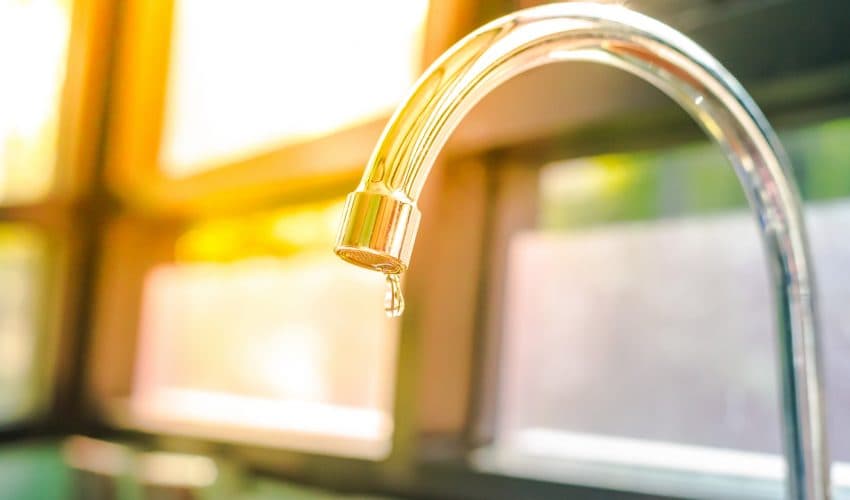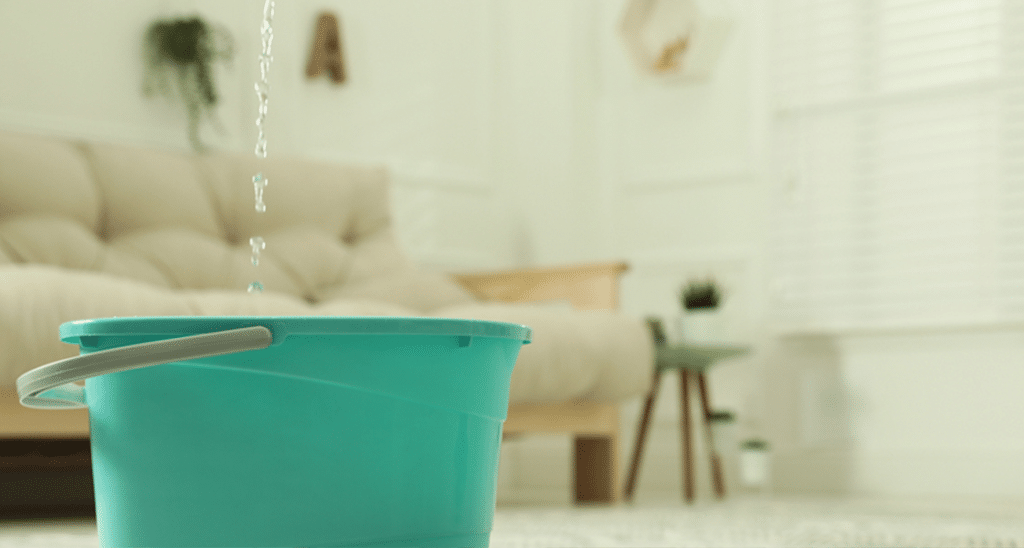We've uncovered this post on Potential Health Risks Associated With Leaky Faucets down the page on the internet and think it made sense to write about it with you on this page.

Intro
A leaking faucet might feel like a small inconvenience, however its consequences extend much past the occasional drip. Understanding the results of a leaking faucet is crucial for both homeowners and the atmosphere. In this short article, we'll explore the different impacts of this usual home concern and why addressing it without delay is necessary.
Reasons For Leaky Faucets
Dripping faucets can result from a selection of elements, consisting of wear and tear, high water pressure, and deterioration. Over time, the continuous use faucets can bring about worn-out seals and gaskets, creating leakages to develop. Furthermore, extreme water stress can place pressure on plumbing fixtures, resulting in leakages. Deterioration and rust can also deteriorate faucet components, making them vulnerable to leak.
Water Wastage
Among the most considerable consequences of a leaky faucet is water waste. Also a small drip can amount to gallons of drainage over time. This not just increases water bills however also adds to water shortage and environmental destruction. Attending to dripping taps quickly is crucial for saving this precious resource and reducing its impact on the world.
Financial Influence
Along with drainage, dripping faucets can additionally have a substantial financial influence. Increased water costs are a direct effect of water waste, setting you back house owners thousands of bucks annually. Furthermore, the cost of fixing water damage caused by leakages can be significant, specifically if left ignored for an extended period.
Ecological Effect
The ecological impact of leaking taps expands beyond water waste. By saving water, homeowners can add to wider efforts to mitigate water scarcity and protect natural environments. Sustainable alternatives such as rain harvesting and water-efficient fixtures can further lower the ecological footprint of house water use.
Technological Solutions
Developments in innovation have led to the growth of smart taps and water-saving tools that assist lessen water wastage. Smart faucets utilize sensing units to detect movement and readjust water circulation accordingly, decreasing waste without compromising comfort. Water-saving tools such as aerators and low-flow showerheads are additionally reliable in saving water without jeopardizing performance.
Global Perspectives
While leaky taps might appear like a local problem, they contribute to broader international difficulties such as water shortage and climate modification. In regions currently encountering water stress, every decrease counts, making leakage prevention and repair work necessary. By adopting water-saving practices and buying lasting innovations, house owners can play their part in resolving these pushing worldwide problems.
Governing Steps
Federal government laws play an essential role in mitigating the effect of dripping taps and promoting water conservation. From developing codes that call for water-efficient components to water-saving incentives and refunds, policymakers have a variety of devices at their disposal. By carrying out and applying these regulations, governments can ensure that property owners prioritize water conservation in their lives.
Community Influence
Attending to leaking faucets requires collective initiatives at the area level. By raising awareness concerning the value of water conservation and providing sources for leak discovery and repair service, local authorities can encourage house owners to take action. Initiatives such as water-saving discount programs and leak discovery campaigns can incentivize habits change and promote accountable water use.
Situation Researches
Real-life instances of the impact of leaking faucets emphasize the importance of aggressive upkeep and timely repair work. From water damage to increasing water bills, the consequences of overlooking leaks can be extreme. By sharing these case studies, home owners can much better understand the value of addressing leaky taps immediately.
Educational Campaigns
Educational campaigns play a critical role in increasing recognition about the impacts of leaking taps and advertising water preservation practices. Through workshops, seminars, and on the internet resources, house owners can discover just how to identify and fix leakages themselves. By encouraging people with expertise and devices, instructional projects can promote a culture of responsible water usage within communities.
Wellness Problems
Leaking faucets can create helpful settings for mold and mildew development, posing wellness dangers to residents. The visibility of mold and mildew can intensify respiratory system problems and allergies, specifically in susceptible people. Furthermore, water damages resulting from leakages can compromise the architectural honesty of buildings and bring about costly fixings.
DIY vs. Expert Fixing
When confronted with a leaky faucet, house owners often discuss whether to try fixings themselves or hire a professional plumber. While DIY repair services can conserve cash, they might not constantly address the underlying issue efficiently. Professional plumbing technicians have the expertise and equipment to detect and deal with leakages correctly, ensuring long-term remedies and satisfaction for home owners.
Safety nets
Stopping leaky taps calls for routine maintenance and aggressive procedures. Straightforward tasks such as replacing damaged washers and seals can protect against leaks from developing. In addition, upgrading to high-grade fixtures and reducing water stress can assist lengthen the lifespan of taps and reduce the danger of leaks.
Final thought
To conclude, the effects of a dripping faucet prolong far past the occasional drip. From water waste and enhanced water bills to health and wellness issues and ecological effect, the repercussions of ignoring leaks can be considerable. By dealing with leaking faucets promptly and embracing water-saving methods, home owners can reduce these effects and contribute to a more sustainable future.
Why You Shouldn’t Ignore a Leaky Faucet in Your Home
What Causes a Leaky Faucet?
Various factors can cause a leak, from loose and worn-out parts to corrosion. Your faucet has four essential components from which most plumbing issues will stem: the O-ring, the valve seat, the washer and the gasket.
What Is an O-Ring?
The O-ring is a stem screw that fastens parts of the faucet in place, preventing water from leaking out of the spout. Depending on your faucet type, the stem might have multiple O-rings. Water will drip from the faucet’s handles and base if this part breaks or deteriorates.
What Is a Valve Seat?
The valve seat controls the flow and temperature of the water. Found at the base of the handle, it works as a seal for the faucet’s stem. The valve seat ensures the water is allowed to flow or is blocked as the handles dictate. You’ll know it’s malfunctioning when water leaks from your faucet’s sides.
What Is a Gasket?
The gasket is found between the water inlet and the valve stem. It creates a seal between the faucet and the sink, holding its joints by aerators attached to the stem’s head. Water will trickle out from the base if the gasket isn’t working.
What Is a Washer?
The washer secures the handles and prevents leakage, serving a similar purpose to the O-ring. While the O-ring is ordinarily round and made from an elastic material, such as rubber, the washer is square-shaped and composed of brass, copper and other hard metals. If it malfunctions, corrodes or has been improperly installed, water will leak out of the handles, causing that incessant faucet drip.
Why Is a Leaky Faucet Dangerous?
A leaky faucet left alone for too long can have significant consequences.
Pest Infestations
Since bugs and rodents gravitate towards the scent of water, a leaky faucet will draw pests to your sink. Both are looking for leaks accessible through crawl spaces, which a faucet provides. If you leave water dripping for too long, you run the risk of an infestation.
Rust
If one of the faucet parts has started to corrode, the resulting rust can spread to your pipes and valves with startling speed. The rust might even lead to cracks or other impairments, resulting in more severe plumbing issues.
Your sink could also sustain damage from a leaky faucet. The water in your tap possesses sparse elements of calcium and iron that can stain your sink with repeated and prolonged exposure. Once those elements in the water have been open to the air for some time, your sink will start to rust, creating marks that can be difficult to remove.
https://www.tomsmechanical.com/blog/why-you-shouldnt-ignore-a-leaky-faucet-in-your-home

As a fervent reader about How to Fix a Leaky Faucet, I assumed sharing that piece of content was really helpful. Kindly pause to share this page if you enjoyed it. Thanks a lot for being here. Revisit us soon.